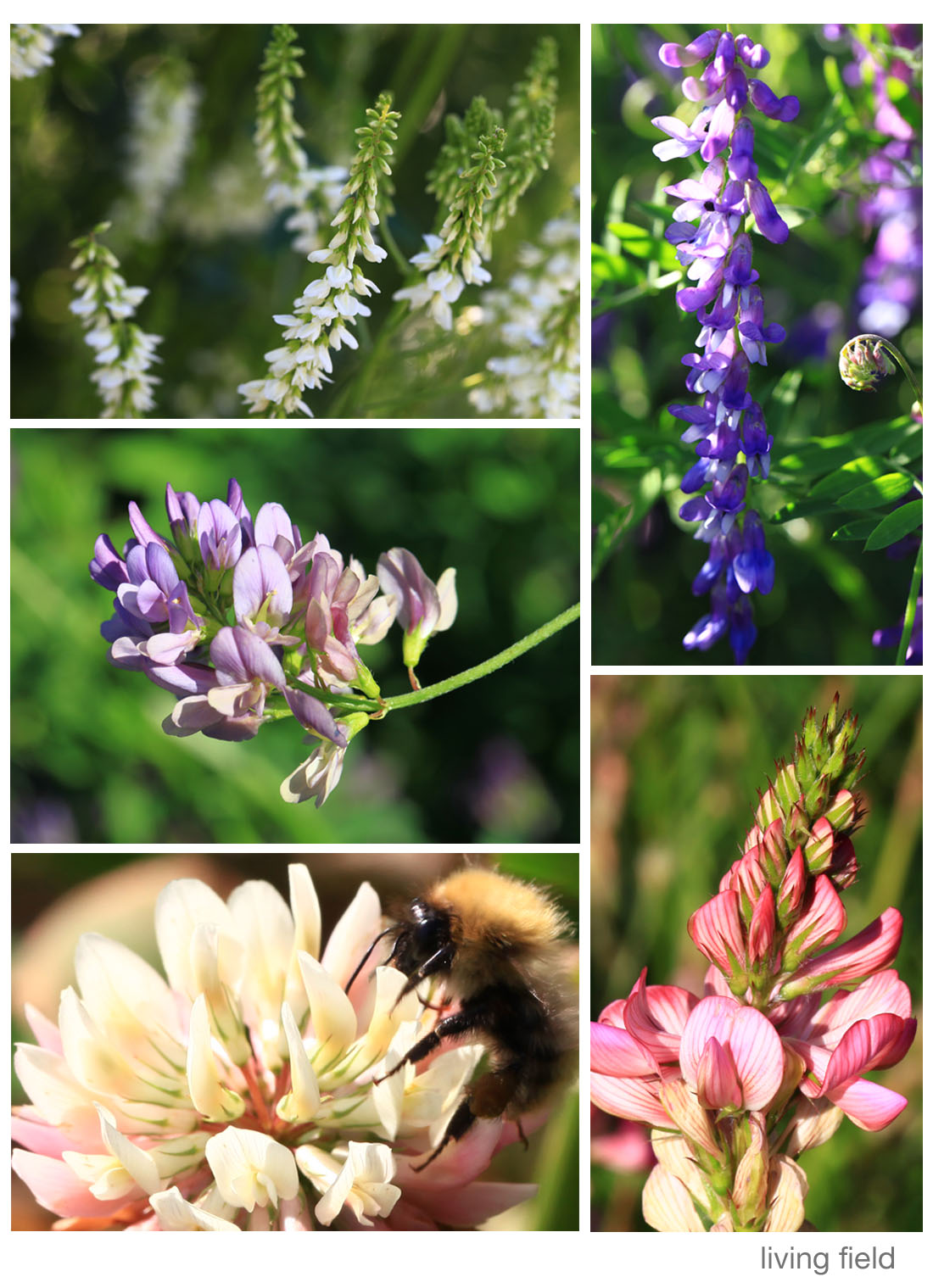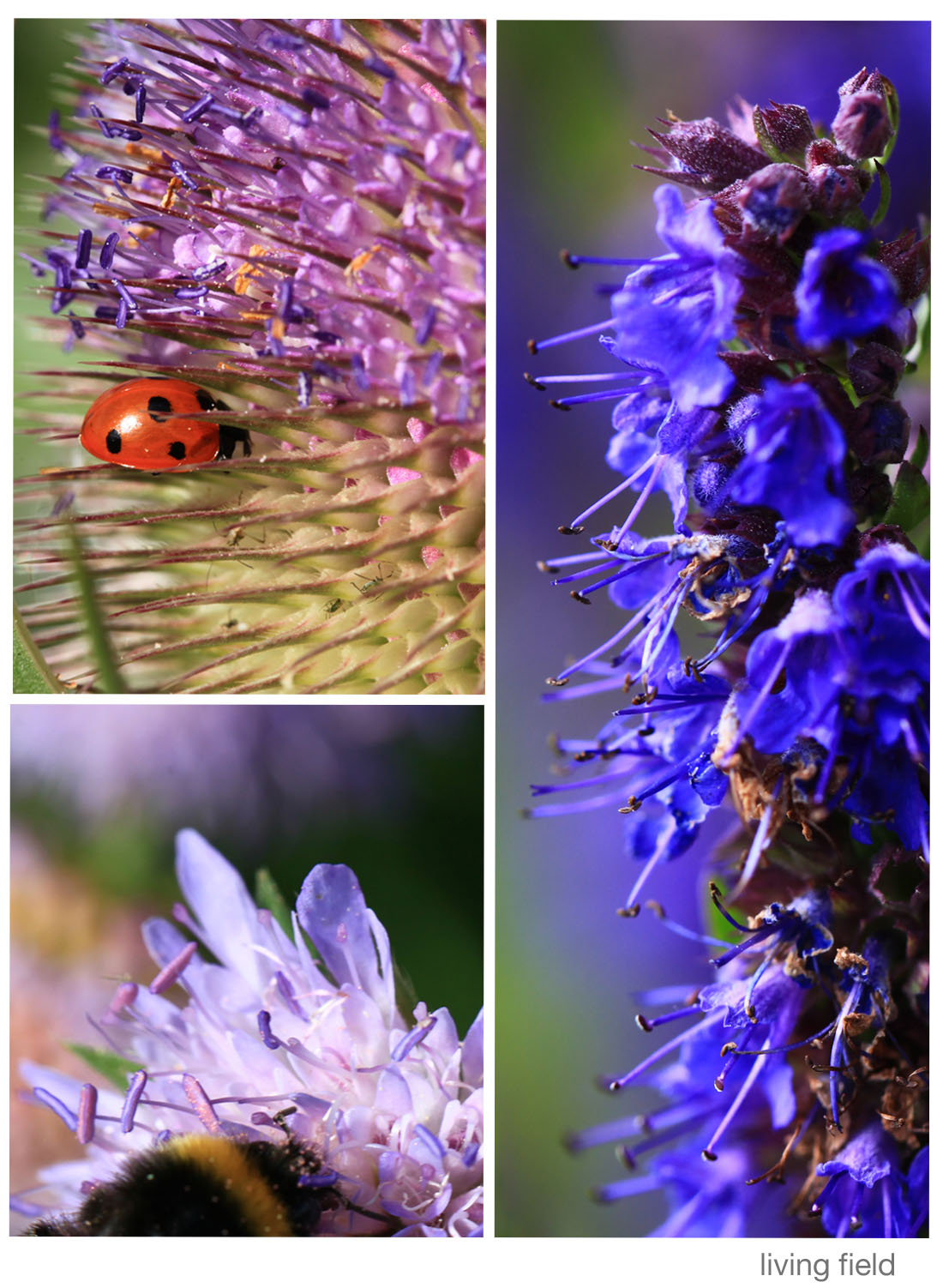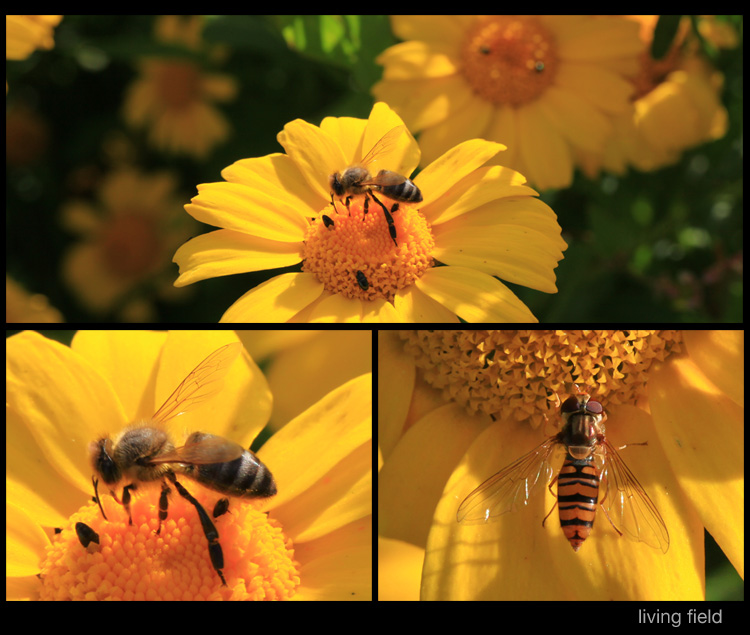Unremitting wet since solstice-time in late June. The field scabious Knautia arvensis offers bee-food en masse for months in most years, and in June the mauve flowers promised a fine show, already thick with bumble bees.
Since then they have been thrashed by the heavy rain and wind and grasses now dominate the meadow. Yet on the rare sunny afternoon, the insects take their feast on the Garden’s wild plants.

Chief among them are the nitrogen fixing legumes, offering high-nitrogen, high-protein take-away. The images (above, top left clockwise) show white melilot, the blue-flowered tufted vetch, sainfoin, alsike and lucern.
Only the tufted vetch is common in the margins and lanes here. The others have been tried as forages in the past but are now rarely found. Other legumes flowering (not shown) include red and white clover, the yellow-flowering melilot and greater bird’s-foot-trefoil, all well attended by bees.

The other plants that most years offer months of rich flower-food fare no better.The striking, blue viper’s bugloss in the medicinals bed is almost finished bar a few, one of which is shown above right. And the remaining field scabious, bottom left above, will continue to put out their sumptuous floral parts for bees to drain and trash.
Yet again, the benefits of growing in this small space a diversity of native and medicinal plants pays, because teasel, knapweed and greater knapweed, and a set of annual composites including cornflower and corn marigold are all offering their wares in return for chance pollen.
Teasel will now flower along its bristly head for some weeks – the ladybird in the image top left above just slotting in between the spikes, jostling several aphids that may not be visible at this magnification.

What’s to come – the deadnettle family – the labiates – will sustain the insects through to the autumn equinox. Many are only just in flower – betony, wild marjoram, some field mints, hemp-nettles, a calamint, sage, lemon balm and hyssop.
